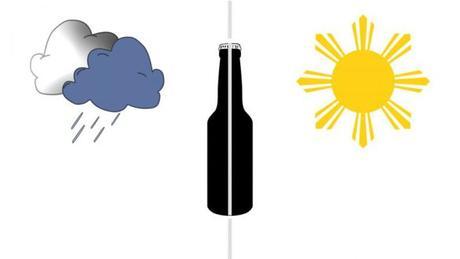
Since 2009, Oregon's Ninkasi Brewing has been producing Maiden the Shade, a "summer IPA" created to help celebrate an annual fair.
It recently , bringing it to my attention for the first time, thanks to East Coast selection bias and that peskiness of distribution. I can say nothing for the beer, having never had it, but the forethought of that brand sure caught my attention. In recent years, the prescience of the Pacific Northwest in regard to beer and received a new look love of all things hop seems like a future that had long been planned, but perhaps America's love affair with IPA wasn't always a guaranteed thing.
Either way, the idea of a "summer IPA" sounds pretty damned smart right about now.
In the most recent issue of Beer Advocate magazine, I have a that had long caught my attention: consideration of the "death" of seasonal beers. It's safe to assume that unique brands made solely for winter, spring, summer and fall will never go away, but the place and purpose of these kinds of beers is certainly changing. As noted in the Beer Advocate piece , a recent way to combat declining sales of seasonal brands has been to simply diversify IPA offerings. California's Coronado Brewing was one example, this year introducing a New England-style IPA as one of its four seasonal products.
Depending on which market research company you choose, 2016 was either a bad or slightly worse for seasonals. IRI's channels had seasonal beer down around through nearly all of 2016 vs. 2015. Nielsen tracked seasonal decline at . A fun note: IRI, which has a category of "Specialty Release," had that segment up 18.2% 2016 vs. 2015.
Comparatively, here's how IRI tracked 20 beer styles and dollar growth through the first 11 months of 2016:
Of this bunch, the declines came from styles that have a distinct seasonal feel (barleywine, strong ale), a root in tastes not popular in America right now (ESB) and one that often gets extra hopping because it's easier to explain that than what its name means (red). Wheat beer, with a decline of 4.3% year-to-year, likely suffered from a dip in sales for Blue Moon. Otherwise, 15 of 20 styles all saw an increase, with some larger growth likely attributed to the sheer fact that many styles simply got a boost in volume from breweries making the beers for the first time and/or new breweries making beer, period. Hundreds of breweries are opening every year, and in a pure, quantitative sense, they're the most successful.
According to data from the Brewers Association and reported by Brewbound , microbreweries (less than 15,000 barrels per year) saw sales increase by 27% and were responsible for 78% of total craft beer growth in 2016. For all breweries larger than that under the BA's "craft" umbrella, a little more than a third saw flat or declining sales - including regional and national names like Yuengling, Boston Beer, Sierra Nevada, Gambrinus and Left Hand.
How might this seemingly random sales outcome be tied to seasonal beer sales? The business model is different. The smallest, most nimble breweries are thriving off the variety they can create on a daily basis. They can make what they want, when they want. A larger brewery like Sierra Nevada takes about nine months to create the final version of some beers, like Otra Vez. Meanwhile, a brewer like Jason Alexander at Charlotte, North Carolina's Free Range Brewing, pumps out batches that would be test size for larger breweries as his normal releases.
Ultimately, the decline of the seasonal category isn't about seasons themselves, it's about variety and how often and easily that's available to us. Seasons and food choices, for example, have a strong correlation . But perishable food isn't an option year-round, like styles of beer, which can be made anytime, anywhere - and often is. Variety in beer is constantly churning alongside all its static options, which are already plentiful. One-offs and specialty releases sit next to core beers that span all kinds of flavors. When we have this level of choice, it no longer becomes about how we feel on a quarterly seasonal basis. It's about what we want to drink in that moment.
Or, to put it plainly, what's new and niche is popular. And that says nothing of the value drinkers place on rare and specialty beers that are available, which also take up mindshare from the space in which seasonal beers used to sit.
In a recent issue of Craft Beer & Brewing magazine, Melvin Brewing co-founder and brewer Jeremy Tofte noted that seasonal IPA releases hit on all of the above :
"They're just as good as 2×4 ['the best damn DIPA in the world'], and they'll rotate every three months so beer lovers will have a new beer to try, and then they won't see it again for nine months."
The evolution of this category is something of an epitome of the industry itself. So many breweries, so many options. For every action, a reaction. What means "new" now has taken from what was "new" of old.
Read more about seasonal beer in this story from Beer Advocate .Bryan Roth
"Don't drink to get drunk. Drink to enjoy life." - Jack Kerouac

